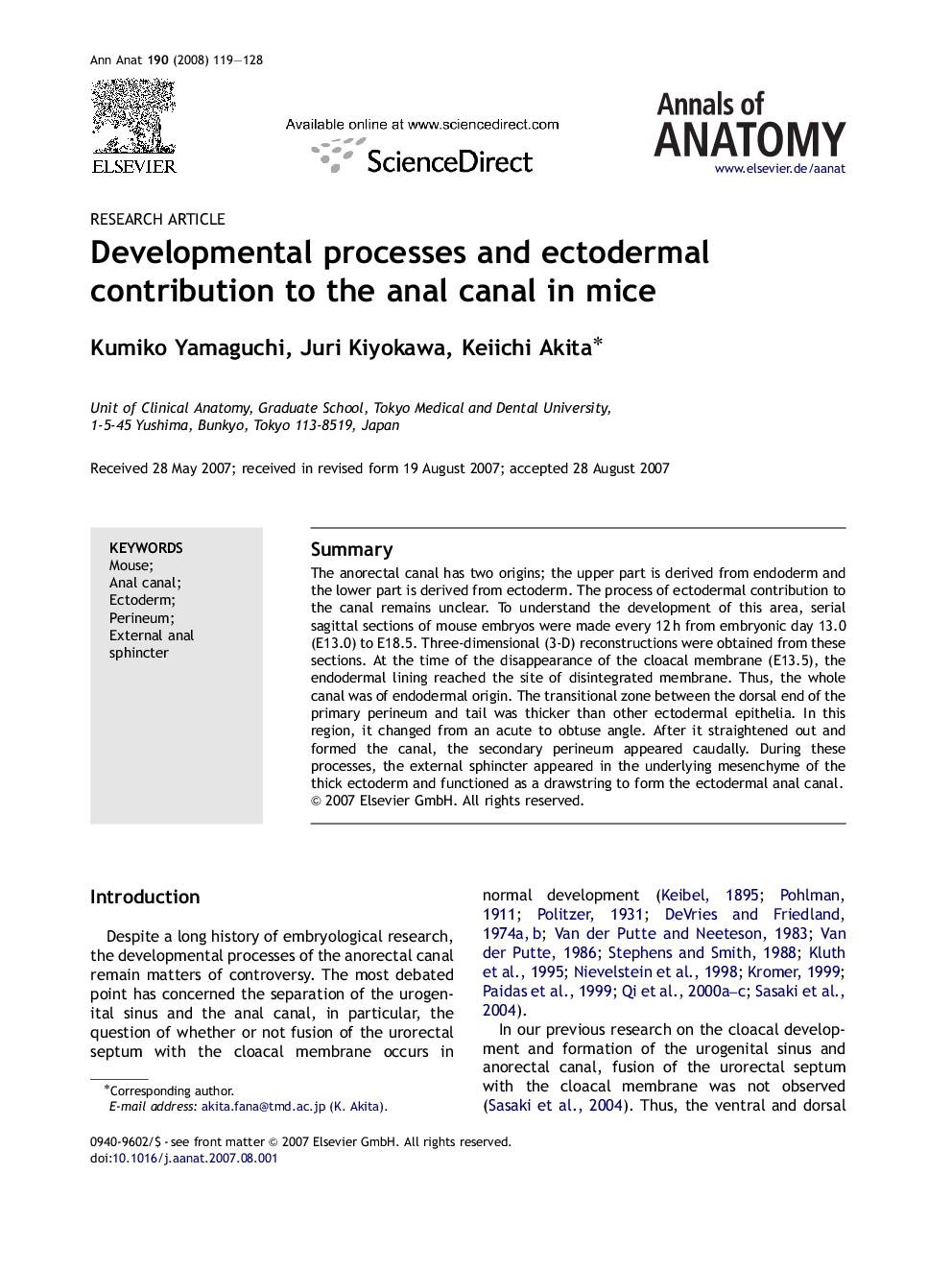| Article ID | Journal | Published Year | Pages | File Type |
|---|---|---|---|---|
| 8462772 | Annals of Anatomy - Anatomischer Anzeiger | 2008 | 10 Pages |
Abstract
The anorectal canal has two origins; the upper part is derived from endoderm and the lower part is derived from ectoderm. The process of ectodermal contribution to the canal remains unclear. To understand the development of this area, serial sagittal sections of mouse embryos were made every 12Â h from embryonic day 13.0 (E13.0) to E18.5. Three-dimensional (3-D) reconstructions were obtained from these sections. At the time of the disappearance of the cloacal membrane (E13.5), the endodermal lining reached the site of disintegrated membrane. Thus, the whole canal was of endodermal origin. The transitional zone between the dorsal end of the primary perineum and tail was thicker than other ectodermal epithelia. In this region, it changed from an acute to obtuse angle. After it straightened out and formed the canal, the secondary perineum appeared caudally. During these processes, the external sphincter appeared in the underlying mesenchyme of the thick ectoderm and functioned as a drawstring to form the ectodermal anal canal.
Related Topics
Life Sciences
Biochemistry, Genetics and Molecular Biology
Cell Biology
Authors
Kumiko Yamaguchi, Juri Kiyokawa, Keiichi Akita,
